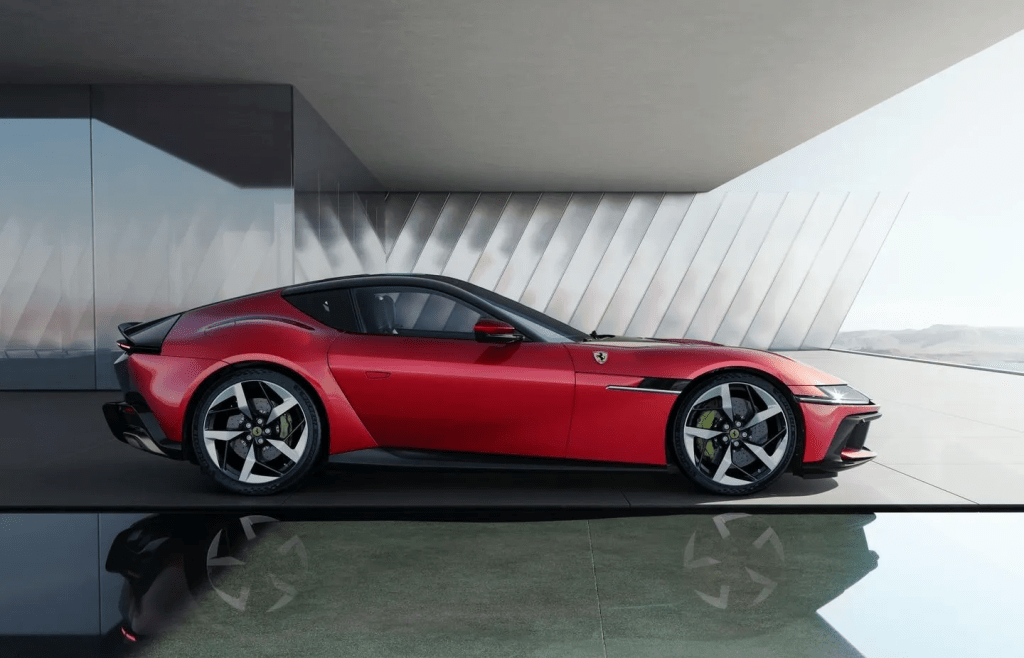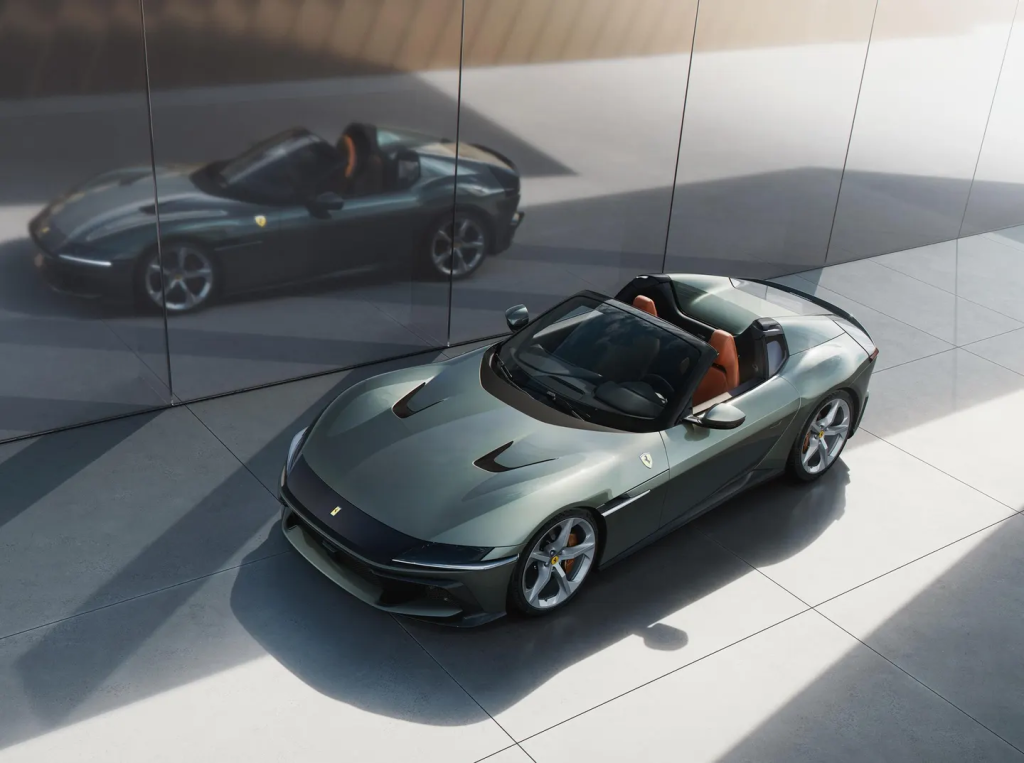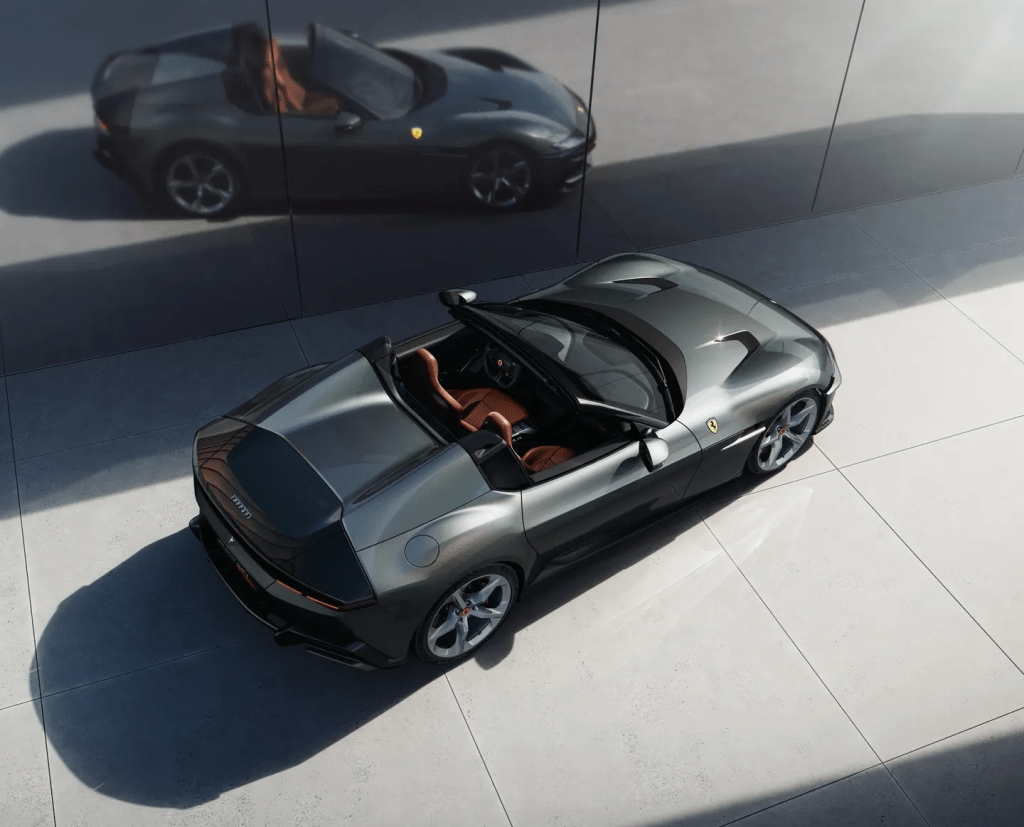No other engine on earth produces a symphony quite like a naturally aspirated Ferrari V12, from the first V12s of the late 1940s to the big-bore V12s of the 1950s and ‘60s to the 818-horsepower coupe and spider introduced in our merry month of May 2024.

Friday in Miami while Scuderia Ferrari practiced for this Sunday’s Grand Prix of Miami, Ferrari unveilled its latest front-mid-engine V12 supercar, the 12Cilindri.
In a surprise move, Ferrari is unveiling both the coupe and spider at the same time.


To evolve their already astounding 6.5-litre V12, Ferrari focused on greatly enhanced breathing coupled with even greater revvability.
The 12Cilindri also has an 8-speed dual-clutch gearbox with precise millisecond shifting, an all-new aluminum body architecture, and yet more advances in powertrain and chassis control software. And of course it benefits from Ferrari’s unrivaled understanding of aerodynamics.

Mounted front-mid-ship—meaning the entire engine sits behind the front axle line for near-perfect balance—the engine produces its 818 horsepower at a staggering 9250 rpm, with 500 lb.-ft. of torque peaking at 7250 rpm.
If this engine is anything at all like the 812s I’ve driven before, power and sound should prove utterly immersive from about 4000 rpm onwards.

To help the engine rev more quickly and higher than the previous 812 Superfast, GTS and Competizione variants, Ferrari has dramatically reduced the weight of the major reciprocating pieces, the 12 pistons, 12 connecting rods and crankshaft that spin inside the engine.
Most significantly, Ferrari has adopted new titanium connecting rods, which should be light as a feather. They have also used a new form of aluminum to lighten the pistons.

By making these moving pieces lighter, they can gather revs much more quickly, almost effortlessly. If you have ever held a watch with a titanium bracelet, then you understand.
These changes have reduced the weight of the major moving pieces by an extraordinary 40 percent, doubly impressive when considering this was already an exotic powerplant.
In my experience driving the 812 Superfast and 812 GTS, this engine already shrieked like Grand Prix engines, gathering revs so quickly under full throttle that on the first or second acceleration run one could miss a paddle shift and bounce the rev limiter.
If the previous engine revved that quickly, well, this V12 should prove a truly astonishing and unique experience.

You can’t spin an engine to more than 9000 rpm without an equally impressive valvetrain, which is all those little bits and pieces that pop open and closed in milliseconds to allow each of the twelve combustion chambers to inhale and exhale.
An Olympic sprinter needs more than long, strong legs—he needs incredible lungs, too. Drawing from the Scuderia’s Formula One engines, the 12Cilindri employs sliding finger followers with a special coating that reduces friction.

In action at high revs, the cams, valves, finger followers and springs look like a hypersonic knitting machine, furiously yet precisely moving in tiny increments.
These pieces, combined with intake manifolding, are known as the upper intake, and create the treble clef sounds of the Ferrari V12 symphony.
Dancing atop this narrow-angle V12, the valvetrain and upper intake manifolding, all fed by big-bore inlet tubes that draw air from just behind the front bodywork, are equivalent to the violins, flutes, clarinets, basset horns and trumpets of an orchestra.

To fill in down low, deliver that basso profundo that shakes in the driver’s chest, the bass clef of brass, cello, and string bass, Ferrari has developed a new 6-into-1 exhaust system for each cylinder bank that channels and tunes the exhaust gases as deftly as the tubing of a Miraphone.
The shriek of the engine will play over the richness of the exhaust.

Power is fed to Ferrari’s now well proven 8-speed dual-clutch gearbox, which was introduced in the SF90 Stradale, and later employed in the Roma and Portofino M.
In both Roma and Portofino M this gearbox has proven smooth and shock-free, yet robust enough to handle the power and torque of this mighty V12. Gear ratios have been tailored to suit the power and torque delivery of the V12.
Software meters and manages the amount of torque delivered in each gear, with full wallops available from third and fourth on, right where you want it when launching into triple digit speeds.
The paddleshifters allow millisecond shifts up and down the rev range, allowing you to conduct your own symphony.
The 12Cilindri is built on a new all-aluminum chassis. Compared to the outgoing 812 Superfast, the wheelbase is 20mm shorter, or about 0.78 inch shorter.
The structure is significantly stiffer, meaning it is more resistant to twisting in cornering, which allows the suspension engineers to ever more precisely tune the suspension.

Because this is a mid-front-engine design, weight distribution is virtually perfect for a rear-drive vehicle: 48.4 percent of the weight is carried on the front tires, and 51.6 percent on the rears.
To sharpen handling, 12Cilindri has an evolution of the 4-wheel independent steering (4WS) that debuted on the special series 812 Competizione.
This system manages the movement of every wheel independently when entering a corner or working through a sequence of right-left-right corners.

Aerodynamics follow Ferrari established practice, manipulating and controlling airflow under, over, through and around the vehicle. When a car can reach 125 mph in less than 8 seconds, you want the wind to be working with you, keeping the car firmly planted.


This article was first published on forbes.com and all figures are in USD.


